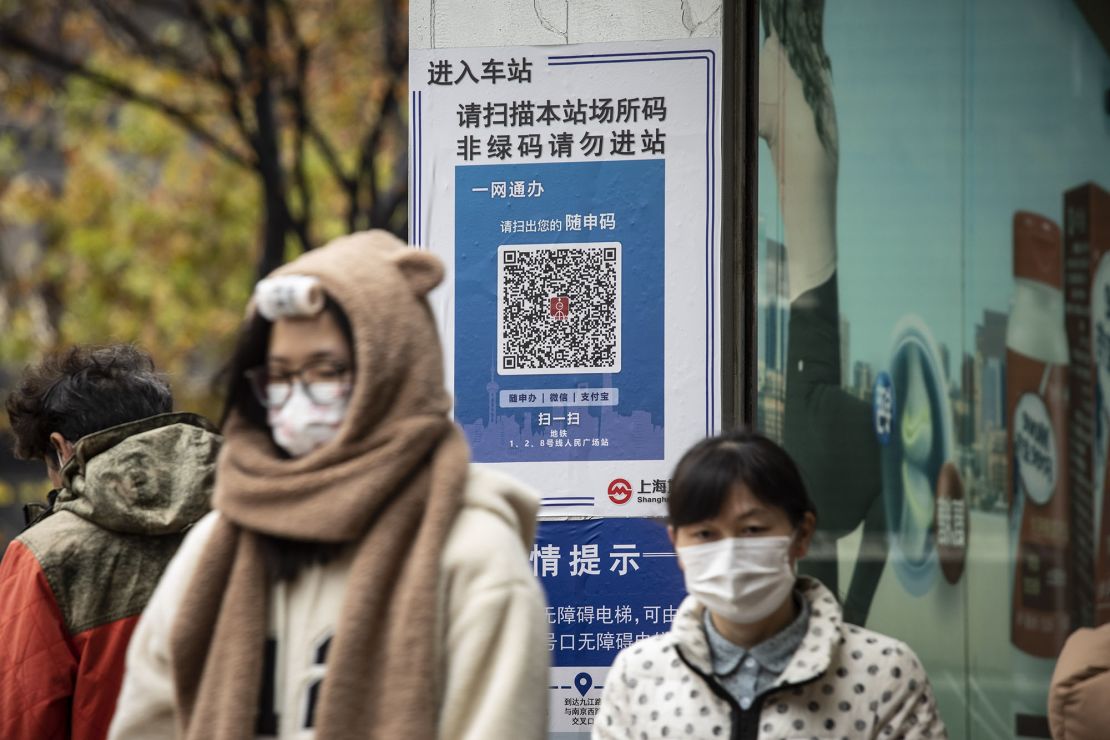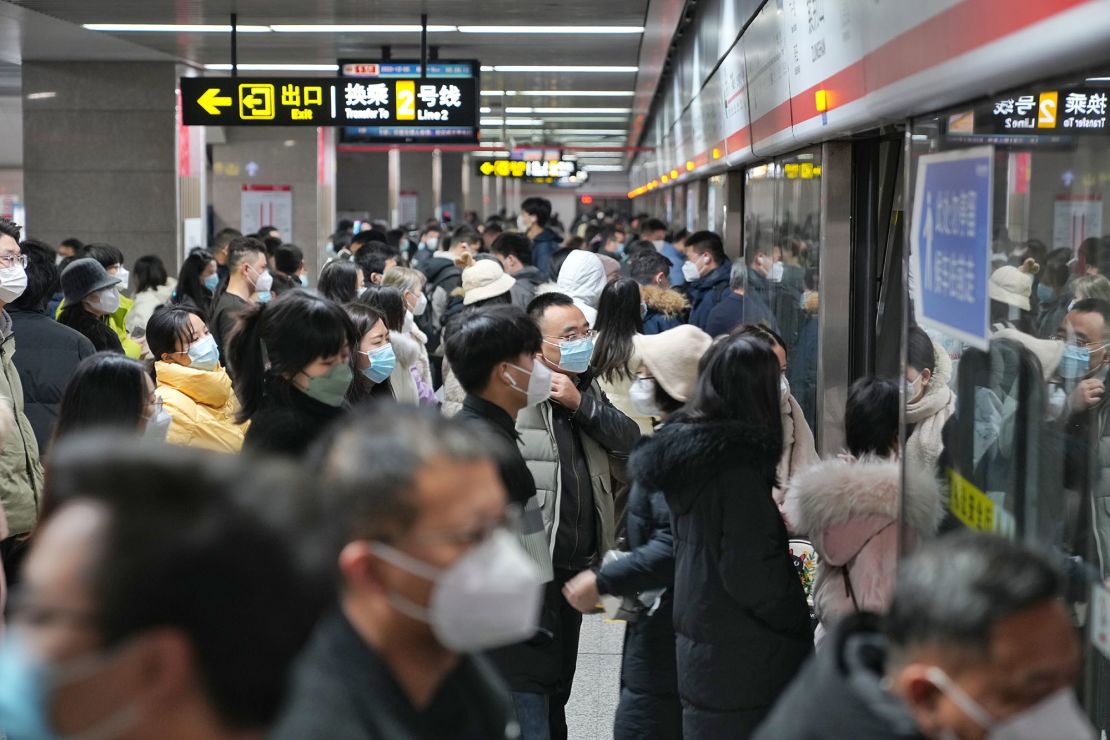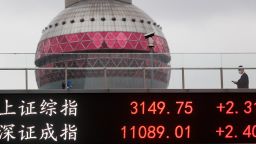Editor’s Note: Editor’s Note: A version of this story appeared in CNN’s Meanwhile in China newsletter, a three-times-a-week update exploring what you need to know about the country’s rise and how it impacts the world. Sign up here.
China’s zero-Covid policy, which stalled the world’s second-largest economy and sparked a wave of unprecedented protests, is now being dismantled as Beijing on Wednesday released sweeping revisions to its draconian measures that ultimately failed to bring the virus to heel.
The new guidelines keep some restrictions in place but largely scrap the health QR code that has been mandatory for entering most public places and roll back mass testing. They also allow some Covid-19 cases and close contacts to skip centralized quarantine.
They come after a number of cities in recent days started to lift some of the harsh controls that dictated – and heavily restricted – daily life for nearly three years in China.
But while the changes mark a significant shift – and bring relief for many in the public who’ve grown increasingly frustrated with the high costs and demands of zero-Covid – another reality is also clear: China is underprepared for the surge in cases it could now see.
Experts say though much is still unknown about how the next weeks and months will progress, China has fallen short on preparations like bolstering the elderly vaccination rate, upping surge and intensive care capacity in hospitals, and stockpiling antiviral medications.
While the Omicron variant is milder than previous strains and China’s overall vaccination rate is high, even a small number of severe cases among vulnerable and under-vaccinated groups like the elderly could overwhelm hospitals if infections spike across the country of 1.4 billion, experts say.
“This is a looming crisis – the timing is really bad … China now has to relax much of its measures during the winter (overlapping with flu season), so that was not as planned,” said Xi Chen, an associate professor at the Yale School of Public Health in the United States, pointing to what was likely an acceleration in China’s transition, triggered by public discontent.
The guidelines released Wednesday open up a new chapter in the country’s epidemic control, three years after cases of Covid-19 were first detected in central China’s Wuhan and following protests against the zero-Covid policy across the country late last month.
Where China once controlled cases by requiring testing and clear health codes for entry into most public places and for domestic travel, those codes will no longer be checked except for in a handful of locations like medical institutions and schools. Mass testing will now be rolled back for everyone except for those in high-risk areas and high-risk positions. People who test positive for Covid-19 but have mild or asymptomatic cases and meet certain conditions can quarantine at home, instead of being forced to go to centralized quarantine centers, as can close contacts.
Locations classified by authorities as “high risk” can still be locked down, but these lockdowns must now be more limited and precise, according to the new guidelines, which were circulated by China’s state media.
The changes mark a swift about-face, following mounting public discontent, economic costs and record case numbers in recent weeks. They come after a top official last week first signaled the country could move away from the zero-Covid policy it had long poured significant resources into – though another official on Wednesday said the measures were a “proactive optimization,” not “reactive,” when asked in a press briefing.
“China has pursued this policy for so long, they’re now between a rock and a hard place,” said William Schaffner, a professor of infectious diseases at the Vanderbilt University Medical Center in the US. “They don’t have good options in either direction anymore. They had really hoped that this epidemic globally would run its course, and they could survive without impact. And that hasn’t happened.”
As restrictions are relaxed, and the virus spreads across the country, China is “going to have to go through a period of pain in terms of illness, serious illness, deaths and stress on the health care system” as was seen elsewhere in the world earlier in the pandemic, he added.

Surge potential
Since the global vaccination campaign and the emergence of the Omicron variant, health experts have questioned China’s adherence to zero-Covid and pointed out the unsustainability of the strategy, which tried to use mass testing and surveillance, lockdowns and quarantines to stop a highly contagious virus.
But as some restrictions are lifted, in what appears to be a haphazard transition following years of focus on meticulously controlling the virus, experts say change may be coming before China has made the preparations its health officials have admitted are needed.
“An uncontrolled epidemic (one which only peaks when the virus starts running out of people to infect) … will pose serious challenges to the health care system, not only in terms of managing the small fraction of Covid cases that are severe, but also in the ‘collateral damage’ to people with other health conditions who have delayed care as a consequence,” said Ben Cowling, a professor of epidemiology at the University of Hong Kong.
But even with easing restrictions, Cowling said, it was “difficult to predict” how quickly infections will spread though China, because there are still some measures in place and some people will change their behavior – such as staying at home more often.
“And I wouldn’t rule out the possibility that stricter measures are reintroduced to combat rising cases,” he said.
Experts agree that allowing the virus to spread nationally would be a significant shift for a country that up until this point has officially reported 5,235 Covid-19 deaths since early 2020 – a comparatively low figure globally that has been a point of pride in China, where state media until recently trumpeted the dangers of the virus to the public.
Modeling from researchers at Shanghai’s Fudan University published in the journal Nature Medicine in May projected that more than 1.5 million Chinese could die within six months if Covid-19 restrictions were lifted and there was no access to antiviral drugs, which have been approved in China.
However, death rates could fall to around the levels of seasonal flu, if almost all elderly people were vaccinated and antiviral medications were broadly used, the authors said.
Last month, China released a list of measures to bolster health systems against Covid-19, which included directives to increase vaccination in the elderly, stockpile antiviral treatments and medical equipment, and expand critical care capacity – efforts that experts say take time and are best accomplished prior to an outbreak.
“(Is China prepared?) If you look at surge capacity three years on and the stockpiling of effective antivirals – no. If you talk about the triage procedures – they are not strictly enforced – and if you talk about the vaccination rate for the elderly, especially those aged 80 and older, it is also overall no,” said Yanzhong Huang, a senior fellow for global health at the Council on Foreign Relations in New York.
Chinese authorities, he added, would likely be closely assessing outcomes like the death rate to decide policy steps going forward.

The gaps
The US has at least 25 critical care beds per 100,000 people, according to the Organization for Economic Co-operation and Development – by contrast, China has fewer than four for the same number, health authorities there said last month.
The system also provides limited primary care, which could drive even moderately sick people to hospitals as opposed to calling a family doctor – putting more strain on hospitals, according to Yale’s Chen.
Meanwhile, weak medical infrastructure in rural areas could foster crises there, especially as testing is reduced and younger people living in cities return to rural hometowns to visit elderly family members over the Lunar New Year next month, he said.
While China’s overall vaccination rate is high, its elderly are also less protected than in some other parts of the world, where the oldest and most vulnerable to dying from Covid-19 were prioritized for vaccination. Some countries have already rolled out fourth or fifth doses for at-risk groups.
By China’s accounting, more than 86% of its population over 60 are fully vaccinated, according to China’s National Health Commission, and booster rates are lower, with more than 45 million of the fully vaccinated elderly yet to receive an additional shot. Around 25 million elderly have not received any shot, according to a comparison of official population figures and December 1 vaccination data.
For the most at-risk over 80 age group, around two-thirds were fully vaccinated by China’s standards, but only 40% had received booster shots as of December 1, according to official data.
But while China refers to third doses for its widely used inactivated vaccines as booster shots, a World Health Organization (WHO) vaccine advisory group last year recommended that elderly people taking those vaccines receive three doses in their initial course to ensure sufficient protection.
The inactivated vaccines used in China have been found to elicit lower levels of antibody response as compared to others used overseas, and many countries using the doses have paired them with more protective mRNA vaccines, which China has not approved for use.
Cowling said evidence from Hong Kong’s outbreak, however, showed China’s inactivated vaccine used in the city worked well to prevent severe disease, but it was critical that the elderly receive three doses in the initial course, as recommended by the WHO. They should then use a fourth dose on top of that to keep immunity high, he added.
Top health officials on November 28 announced a new plan to bolster elderly vaccination rates, but such measures will take time, as will other preparations for a surge.
Minimizing the worst outcomes in a transition out of zero-Covid depends on that preparation, according to Cowling. From that perspective, he said, “it doesn’t look like it would be a good time to relax the policies.”
CNN’s Rebecca Wright and Wayne Chang contributed reporting.






